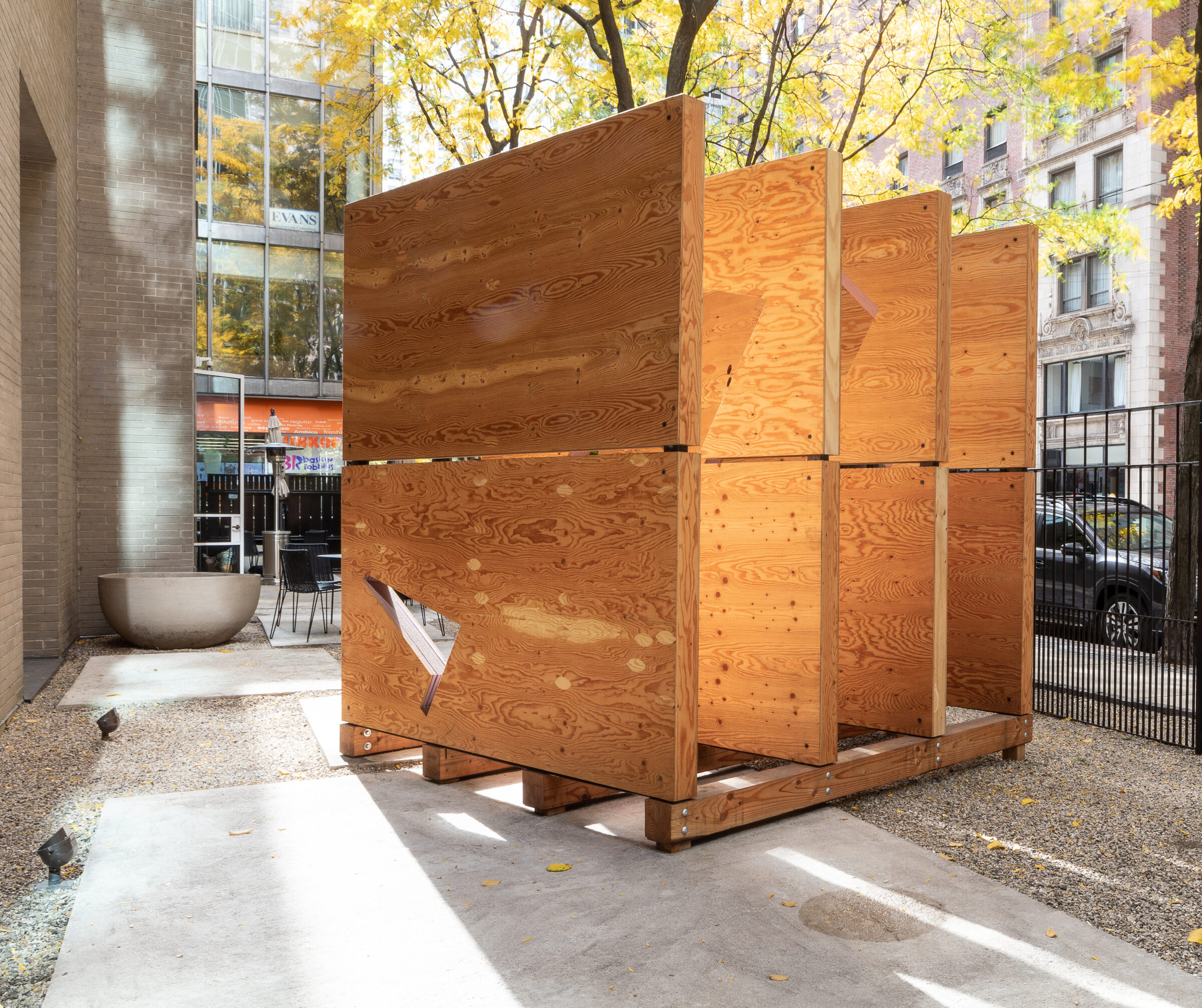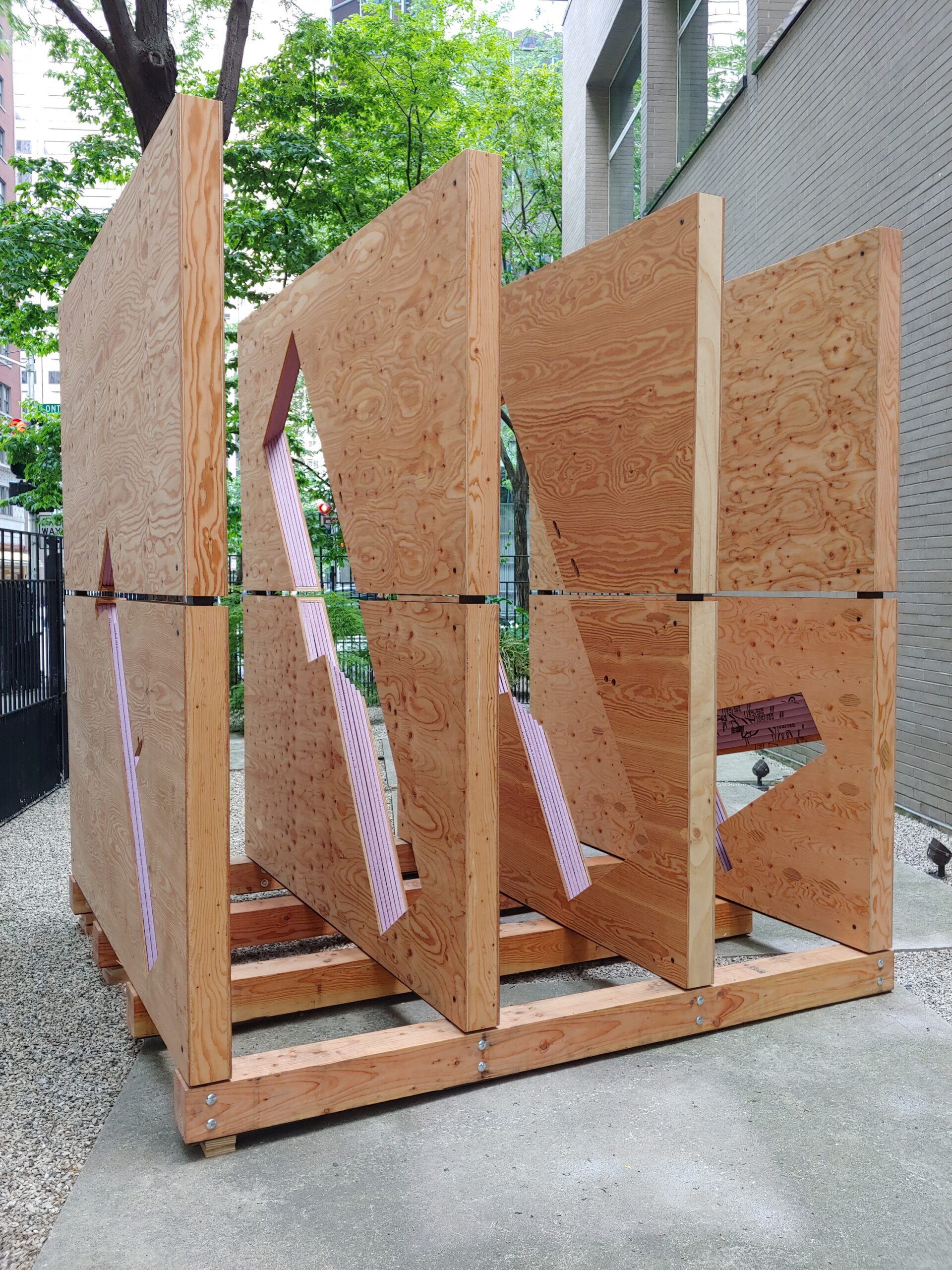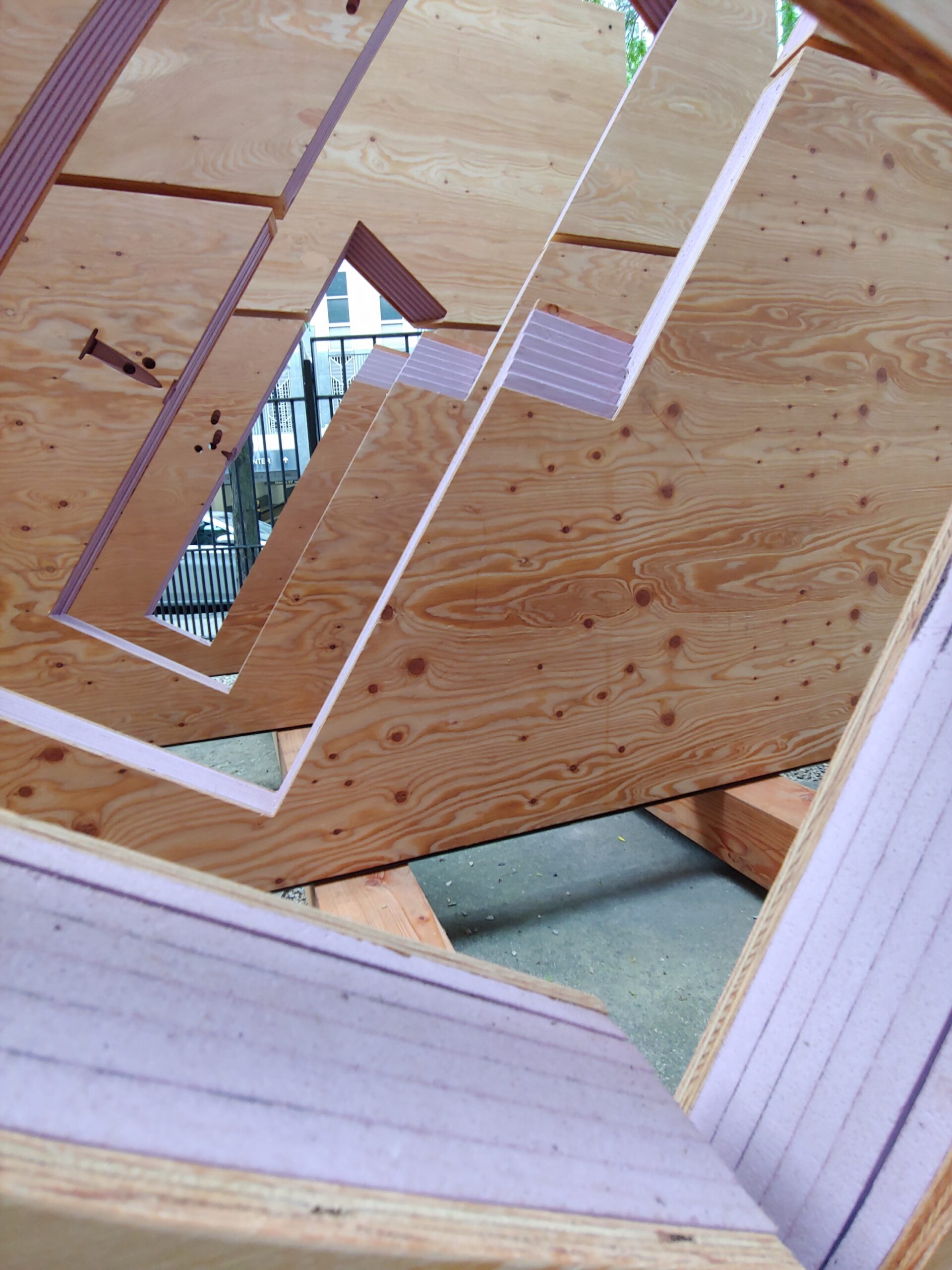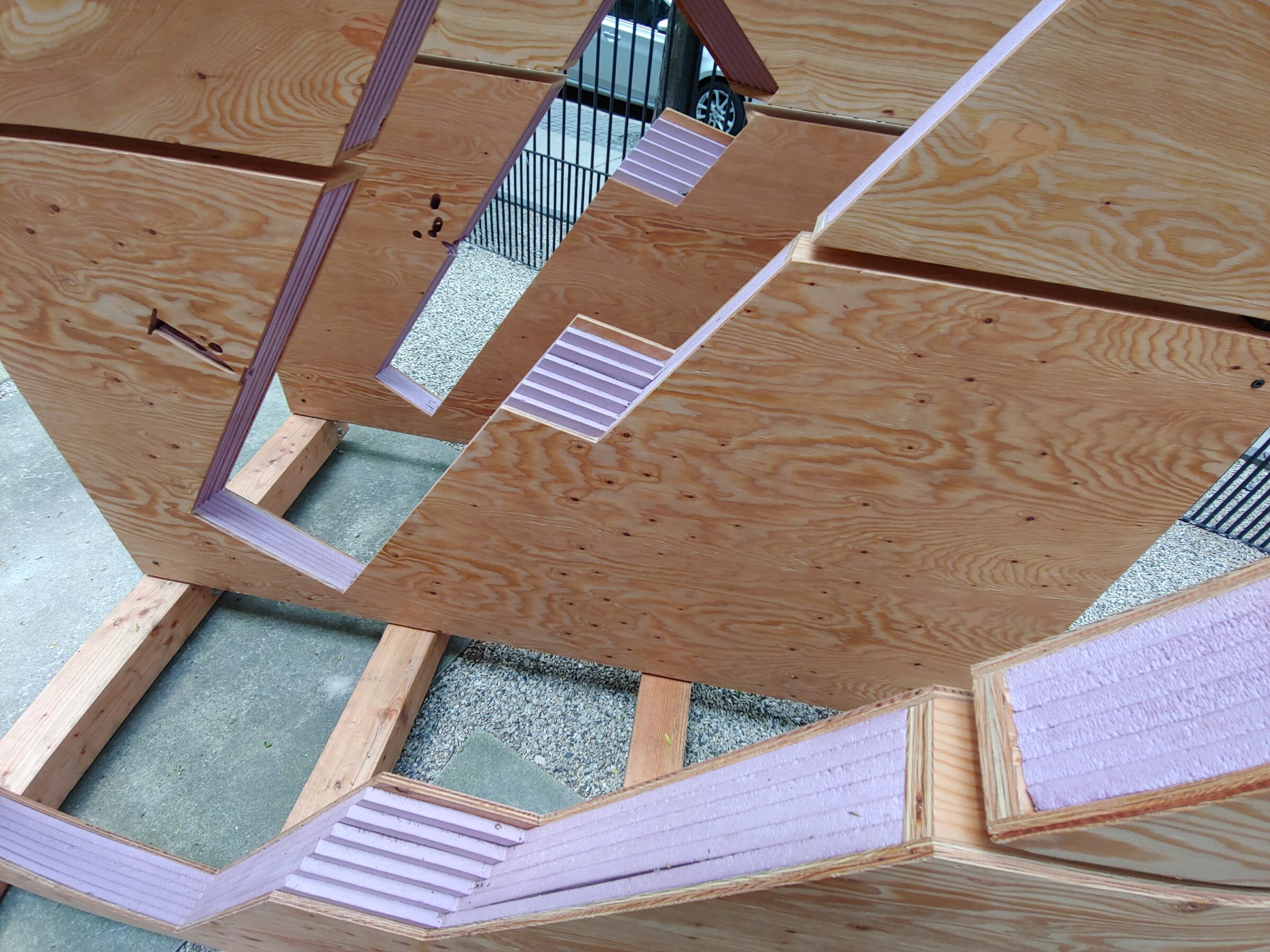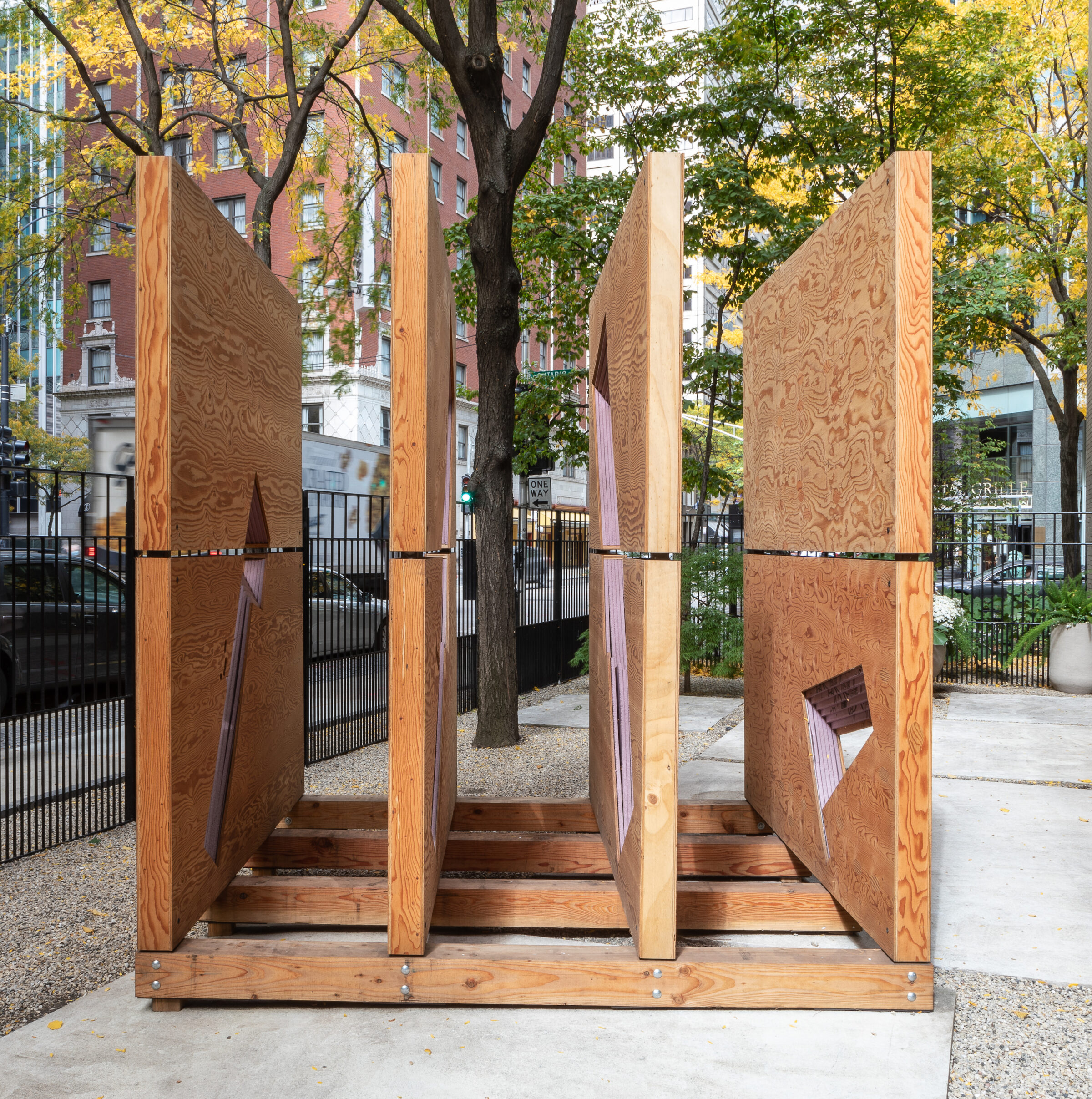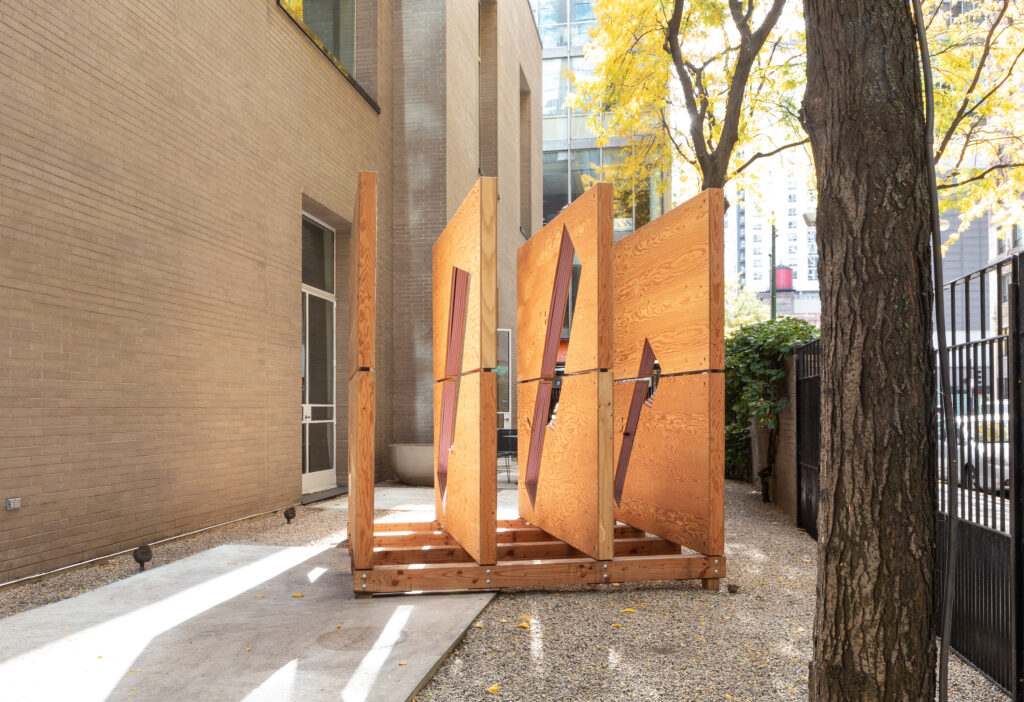Marissa Lee Benedict, David Rueter, and Daniel de PaulaRepose
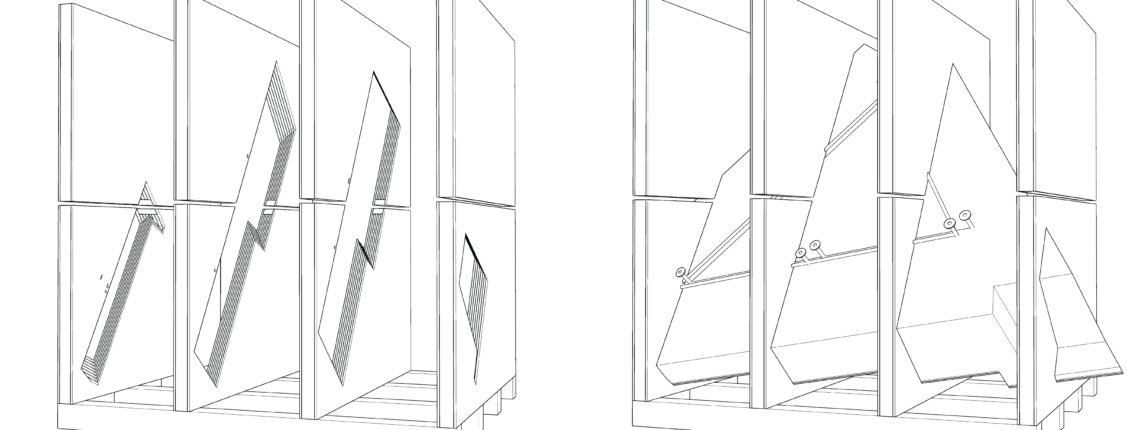
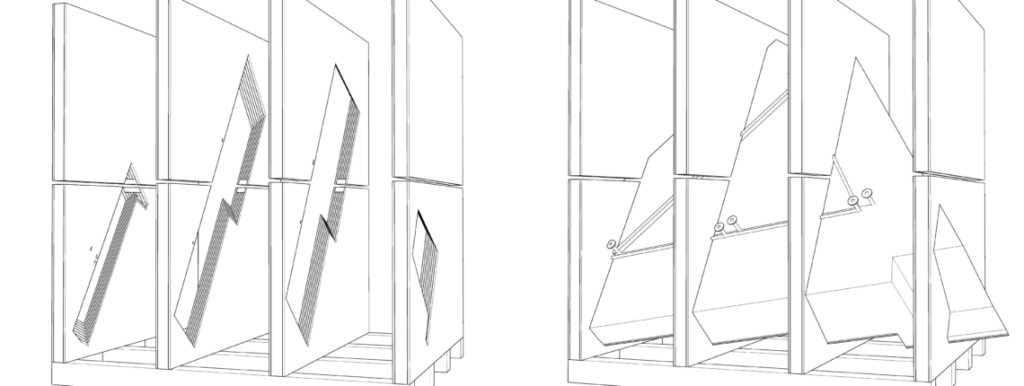
Past exhibition
Marissa Lee Benedict, David Rueter, and Daniel de Paula Repose
About the Exhibition
In 2018, a group of artists salvaged the last remaining trading “pit” floors from the Chicago Board of Trade, after electronic trading rendered these octagonal pits obsolete. Now these floors will circulate through a global purgatory of storage and exhibition, housed in the custom wooden shipping crates that are iconic in the art world. For their Garden Project, Marissa Lee Benedict, David Rueter, and Daniel de Paula rearrange fragments of these shipping crates around a missing object, connecting negation in modernist sculpture with dematerialization in global logistics and commodification. In Repose, these wooden fragments interlock in patterns reminiscent of the geometric flooring at the Board of Trade, transforming as viewers walk around The Arts Club’s Garden while framing an absent object.
Artists' Statement
At first glance, Repose presents itself as enigmatic: the arranged fragments a custom wooden shipping crate for a large, missing object. The absent object, the peculiar nature of its suspension and rotation, and the sliced openings built to cushion and support a buoyed mass flip in and out of focus.
The engineered wooden strata of the precisely cut angular packing materials describe dueling geometries. Some of the slices are capable of being drawn by hand; others are only conceivable through digital rendering software. At play are looping continuities between modernist negation and global logistics. Cuts made by Gordon Matta-Clark in 1978 for the MCA Chicago–commissioned work Circus or the Caribbean Orange, temporarily installed just a few doors east of the Arts Club on Ontario Street, echo through the garden. The sculptural tradition of the negative object (“not-landscape,” “not-architecture”) here become colonized by histories of logistics, capital and flow that, again, stall out—like “a kind of black hole in the space of consciousness.” [1]
Supplementary documentation describes the subject of the negative space at the crate’s center: a fragment of a discarded artifact of financial capitalism, once central to Chicago’s commodities and futures trading.
In 2018, a chance series of communications, buoyed by the generosity of a community of Chicago artists, led artists Daniel de Paula, Marissa Lee Benedict, and David Rueter to salvage and acquire the last remaining commodities futures trading “pit” floor from the Chicago Board of Trade. The 40-foot-diameter, octagonal, seven-tiered corn and soy pits, in operation since the late 19th century, were closed in the mid-2010s as electronic trading made their function obsolete. Sitting, near empty, for years, the pits were disassembled in pieces and removed from the Board of Trade in the late summer of 2018. The corn pit, broken apart into 32 pieces, is now entering a purgatory of circulation and storage—a state maintained by the artists as they wear at the logics and histories sedimented in its bent, geometric, bones.
The abjection of the pit (and the bodies it housed) from the heights of finance suggests a profound break or discontinuity, but it would be more accurate to say that it reflects a steady acceleration and reinforcement of a centuries-old logic of dematerialization through abstraction, commodification, and financialization—a violent logic of bodily and material erasure that the pit itself once facilitated.
Like oddly intersecting angles of rotation, Repose embodies the hallucinatory qualities of knowledge that, anchored in abstractions, govern global logistics and colonial exploration. Repose, at the Arts Club, frames the artwork as evidentiary object, even as it lies in wait for a subject that may never show up.
[1] Rosalind Krauss, “Sculpture in the Expanded Field,” October 8 (1979).
About the Artists
Marissa Lee Benedict, born in Palm Springs, California, in 1985, is a sculptor, writer, and lecturer. Considering subjects that range from technologies of water management to the laying of fiber optic cable, her work draws on traditions of American Land Art to investigate the material conditions of a recently networked world. Benedict received an MFA in Sculpture from the School of the Art Institute of Chicago, and has exhibited at venues such as The Renaissance Society (Chicago) and the Transit Screening Lounge in The U.S. Pavilion as part of the 2018 Venice Architecture Biennial (in collaboration with David Rueter). She has participated in numerous national and international residencies, including Artport Tel Aviv (supported by the Hyde Park Art Center Jackman Goldwasser Residency); and was a 2018-19 artist-in-residence at the Van Eyck Academie (Maastricht, NL).
Daniel de Paula, born in Boston in 1987, is a Brazilian visual artist, researcher, and co-proposer of the independent exhibitions program Um Trabalho Um Texto (São Paulo, BR). The multiple propositions of the artist reflect on the production of geographical space as the reproduction of dynamics of power, thus revealing critical investigations concerning the political and economic structures that shape both places and relationships. de Paula holds a BFA in Art at FAAP – Fundação Armando Alvares Penteado and is enrolled at the Human Geography masters program at USP – University of São Paulo. The artist has exhibited in venues such as PAC – Padiglione d’Arte Contemporanea (Milan, IT), MASP – Museu de Arte Moderna (São Paulo, BR), and MAC – Museu de Arte Contemporânea (São Paulo, BR). He was a 2018–19 artist-in-residence at the Jan Van Eyck Academie (Maastricht, NL), and his work is represented by Galeria Jaqueline Martins.
David Rueter, born in Ann Arbor, Michigan, in 1978, is a visual artist, programmer, and an assistant professor in Art and Technology at the University of Oregon. Employing video, custom electronics, software, cartography, and performance, Rueter’s experiments and interventions confront established technical systems and their philosophical counterparts, opening cracks for radical alternatives and imaginations. Rueter is a graduate of the School of the Art Institute of Chicago’s MFA program in Art and Technology Studies. Rueter has exhibited at venues such as the Transit Screening Lounge in The U.S. Pavilion as part of the 2018 Venice Architecture Biennial (in collaboration with Marissa Lee Benedict), and the Museum of Contemporary Photography (Chicago). Rueter is the recipient, in collaboration with Benedict, of a 2016-18 National Endowment for the Arts “Art Works” grant for the project Gary Lights Open Works (GLOW) in Gary, Indiana.
Installation Images
Funding
This exhibition is supported by a generous grant from the Terra Foundation for American Art.
